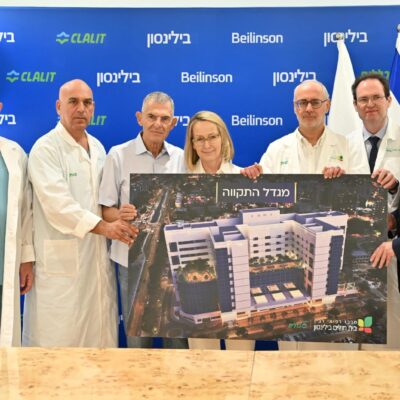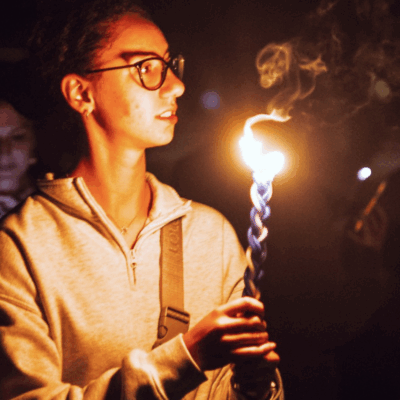You Can’t Go Home Again … Or Can You?

By Ernest M. Kahn, Ph.D.
In the mid-1940s, Thomas Wolfe, a highly regarded American playwright, wrote a play using the first part of the above title. In essence, his position was that millions of Americans who left small communities for new occupations and locations could no longer reverse their decisions and implied that this culture was spreading beyond American shores.
Over the many years of my lifetime and as a Jewish communal professional, I’ve sometimes questioned the validity of this until I was suddenly presented with an opportunity to do just that. And the end result was an emotionally-packed visit to my birthplace at a time that the free world is confronting massive numbers of refugees and disastrous terrorist attacks across the globe.
A little background is necessary:
On a weather-wise miserable day in August, I was alerted by a very diligent secretary of the suburban Philadelphia synagogue to which my family belonged for many years until relocating about a year prior, that an archivist from the Leo Baeck Institute (LBI) was looking for me. I knew of the organization as one which seeks to preserve, protect, collect and otherwise make available the history and achievements of German Jewry. Why was he looking for me? No idea – although I probably should have had one. The LBI archivist called me later that day, explaining that LBI was assisting a citizens committee in the German town of Schwaebisch Gmuend in contacting former residents of the town – specifically Jewish residents – or their descendants.
I was born in that town some 89 years ago and never returned after leaving 80 years
ago. He explained that the community was one of many which sponsored visits by
former residents as part of a process of reconciliation. I knew of these programs, had wondered why my parents were never invited but made no further efforts to connect with them.
This call produced a series of e-mail and telephonic communications with the head
of the volunteer committee: a woman of seemingly infinite patience, much knowledge
about Gmuend and its Jews, current developments in all aspects of the city and a very
practical and realistic concern about bringing people, whatever their life experiences over some 70 years, back to the site of some of their worst times. These contacts were followed by an official invitation from the Lord Mayor.
If these exchanges were extensive, they were overshadowed by those between my wife, our family and myself. We resolved that we could free up time when they wanted us; that our finances enabled us to do this (as guests of the city, they paid all expenses except the air travel) and, with medical consultation, that we were up to making the trip.
Still other considerations arose:
- Even with many years of overseas travel, could we handle such a strenuous trip?
- Would the varied state of German-Jewish relations complicate our visit?
- If the efforts to promote understanding in Schwaebisch Gmuend were valid, could we be of help?
- Could we be credible substitutes for my parents who are no longer with us?
- Following Jewish tradition in visiting the graves of relatives, friends and neighbors, could we handle the emotional stress?
- While we had never opposed contacts with Germany and had been there several times, including in Berlin and Stuttgart, would this visit have weighty considerations?
We ultimately accepted the invitation extended to us after additional conversations with individuals with expertise in these and other types of invitations. Joining us for this “adventure” were 19 others who also accepted the invitations but two of these invitees were precluded from coming due to an airline strike in Germany. Essentially it was an invitation to “come and see how the old town has changed.”
The Gmuend community has conducted such visitations for a number of years. Visits to various sites, of both general and Jewish importance, are key features as are meetings with key public officials as well as leaders of the business and cultural communities. Substantial time was allowed the visitors to explore and recollect the town as well as what has been changed. A tour of the Stolpersteine (metal markers placed by the public authorities on the sidewalk in front of houses from which Jews were forcibly removed) was also included. Depending on each individual visitor, opportunities to reminisce, mourn or search public records became available.
You may note that in all of this I have made no reference to any contacts or visits with the local Jewish community. There is unfortunately a very simple reason: There are no longer any Jews living in Schwaebisch Gmuend (to the knowledge of the city administration). During our five days in Gmuend, the only Jew we met (aside from the 17 invited guests) was the Landesrabbiner, the chief rabbi for the state of Baden-Wuerttemberg. He was in town for the key event of our visit: the dedication of the memorial for the Gmuend synagogue.
After the end of World War II, which the synagogue building survived, it stood abandoned and without a congregation. It was eventually sold to the Kreissparkasse Ostalb (a bank) which was building a campus in the same area. The synagogue building was razed and the site incorporated into the bank’s campus.
There was no opportunity during our brief visit to learn whether other uses for the
existing synagogue building were ever explored. Neither did I learn how and when the concept of a memorial for the synagogue arose. Presumably that was after the completion of the bank’s campus. I also have no direct answer why there was readiness to commemorate the synagogue building but not its members. From a number of local conversations, I infer that there were several legal concerns, numerous questions concerning the wishes of survivors and possible religious issues.
That synagogue was a free standing building, initially used for industrial purposes,
purchased by the Jewish community in 1926 and used for the usual functions. In 1934
and again during Kristallnacht in 1938 the interior and contents of the building was, in
effect, destroyed by Nazi storm troopers. Incidentally, people in Gmuend asked repeatedly why Americans use the “Nazi name” of Kristallnacht whereas Germans call the events of November 8-9, 1938 “Pogrom Nacht.”
Once a decision to erect a monument or memorial to the synagogue was made, the
community engaged in a three year process involving a competition for the most appropriate design and related facets, including the location of the monument; the funding of the construction, prize money and other costs as well as the development of a concept of what the monument represents. The design chosen is a replication of wide white steps which were the entrance to the synagogue.
In any conversation or written materials, the monument is called an “Erinnerungszeichen” – a reminder of a very dark period of their recent history. Increasingly it is also called a “Mahnmal” – a reminder of what could happen without continued alertness. Reconciliation is a further concern and undergirds the desire to involve former Jewish residents. Memory and alertness are the themes of this project sponsored by the City of Schwaebisch Gmuend, the Kreissparkasse Ostalb and the volunteer group Arbeitskreis Erinnerungskultur (Work Group Culture of Memory).
The interest of these groups and others in Schwaebisch Gmuend is rather an open book. In November 1938 there were about 130 Jews in the town – after terrible things happened and worse was yet to come. And it did. And might yet come again.
Our November visit coincided with the current refugee crisis was becoming increasingly bitter, even while the German chancellor was holding firm in her courageous decision to keep German doors open. But it is also a time where German and other European academic, political and cultural bodies wonder openly whether the assimilation of the refugees is the immigrants’ task or the Europeans?
The citizens of Schwaebisch Gmuend are not doing this outreach for the Jews. They are doing this for themselves and those who will join them. So, could we go home again? Yes, we could but we do not have to. There are good and smart people in Gmuend with strong commitments to the values we share. Neither they nor we should set limits on the ways in which we support each other.
Dr. Ernest Kahn is the retired, former associate executive vice president of the Jewish Federation of Greater Philadelphia. He left the city of his birth in 1936 with his parents and fled to Stuttgart, barely 35 miles from where his father was a prosperous merchant. They left Germany for the United States in 1939. He can be reached at ekahn@jfgp.org.














